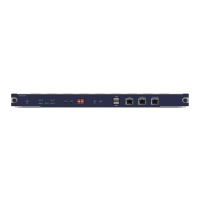ZXR10 GER (V2.6.03) General Excellent Router User Manual Volume-I
134 Confidential and Proprietary Information of ZTE CORPORATION
PAP (Password Authentication Protocol)
CHAP (Challenge Handshake Authentication Protocol)
Password Authentication Protocols
(PAP)
PAP provides a simple method for a remote node to establish its
identity using a two-way handshake. After PPP link
establishment phase is complete, a username and password pair
is repeatedly sent by the remote node across the link (in clear
text) until authentication is acknowledged, or until the
connection is terminated.
PAP supports bi-directional (two ways) and unidirectional (one
way) authentication. With unidirectional authentication, only the
side receiving the call (NAS) authenticates the remote side
(client). The remote client does not authenticate the server.
With bi-directional authentication, each side independently sends
an Authenticate-Request (AUTH−REQ) and receives either an
Authenticate -Acknowledge (AUTH−ACK) or Authenticate- Not
Acknowledged (AUTH−NAK).
This procedure describes how to do password authentication
protocol (PAP) on ZTE ZXR10 GER.
Router CLI (Privileged Mode) has been accessed.
1. To enter into configuration mode by writing config terminal
command in privilged mode as shown in
Table 157.
TABLE 157 CONFIG TERMINAL COMMAND
Command
Format
Command
Mode
Command Function
config
terminal
Exec Enters into global configuration
mode
Result: This enables to enter into global configuration mode.
2. To configure PPP (PAP) on interface, use ppp
authentication {pap} command in interface configuration
mode as shown in
Table 158.
TABLE 158 PPP AUTHENTICATION COMMAND
Command
Format
Command
Mode
Command Function
ppp
authentication
{pap }
Interface
This configures PPP (PAP)
authentication mode
Result: This sets PPP (PAP) authentication mode on an
interface.
Background
Unidirectional
and
Bidirectional
Authentication
Purpose
Prerequisite
Steps

